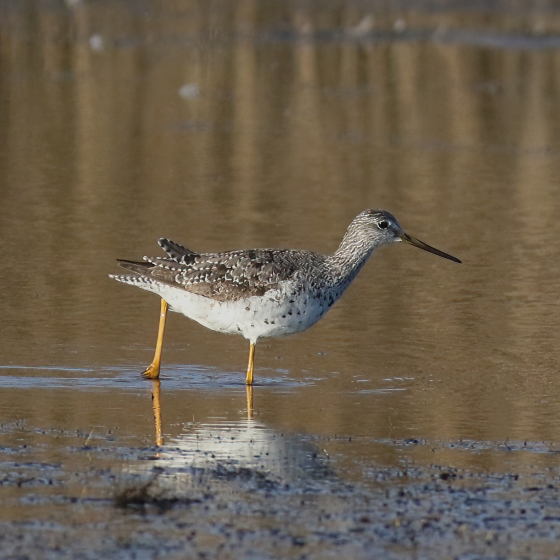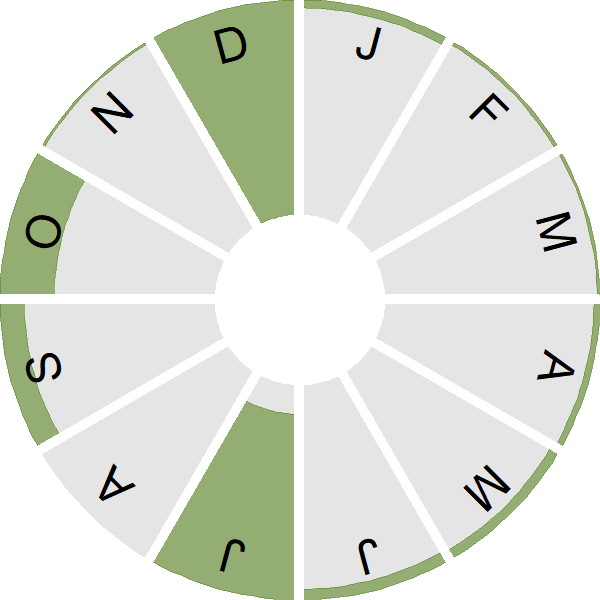Greater Yellowlegs

Introduction
A very rare visitor from North America that closely resembles a Greenshank, most records are in the autumn.

Key Stats
Status and Trends
Conservation Status
Population Size
Population Change
Population trends of this scarce species are not routinely monitored.
Distribution
This vagrant is too rarely reported to map distribution.
Distribution Change
This vagrant is too rarely reported to map distribution change.
Seasonality
Greater Yellowlegs is a very rare vagrant recorded sporadically throughout the year. Peaks in reporting relate to well-watched individual vagrants.
Weekly pattern of occurrence
The graph shows when the species is present in the UK, with taller bars indicating a higher likelihood of encountering the species in appropriate regions and habitats.

Movement
Britain & Ireland movement
Biology
Survival and Longevity
Survival is shown as the proportion of birds surviving from one year to the next and is derived from bird ringing data. It can also be used to estimate how long birds typically live.
Classification, names and codes
Classification and Codes
- Order: Charadriiformes
- Family: Scolopacidae
- Scientific name: Tringa melanoleuca
- Authority: JF Gmelin, 1789
- BTO 2-letter code: LZ
- BTO 5-letter code: GREYE
- Euring code number: 5500
Alternate species names
- Catalan: gamba groga grossa
- Czech: vodouš velký
- Danish: Stor Gulben
- Dutch: Grote Geelpootruiter
- Estonian: ameerika heletilder
- Finnish: amerikanviklo
- French: Grand Chevalier
- German: Großer Gelbschenkel
- Hungarian: mocsári cankó
- Icelandic: Mosastelkur
- Irish: Ladhrán Buí
- Italian: Totano zampegialle maggiore
- Latvian: lielais dzeltenstilbis
- Lithuanian: margasis tulikas
- Norwegian: Plystresnipe
- Polish: brodziec piegowaty
- Portuguese: maçarico-grande-de-perna-amarela / perna-amarela-grande
- Slovak: kalužiak jarabý
- Slovenian: veliki rumenonogi martinec
- Spanish: Archibebe patigualdo grande
- Swedish: större gulbena
- Welsh: Melyngoes Mawr

